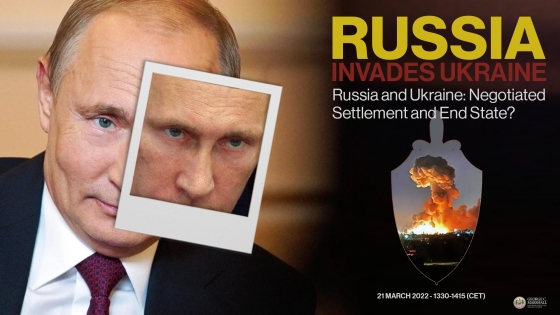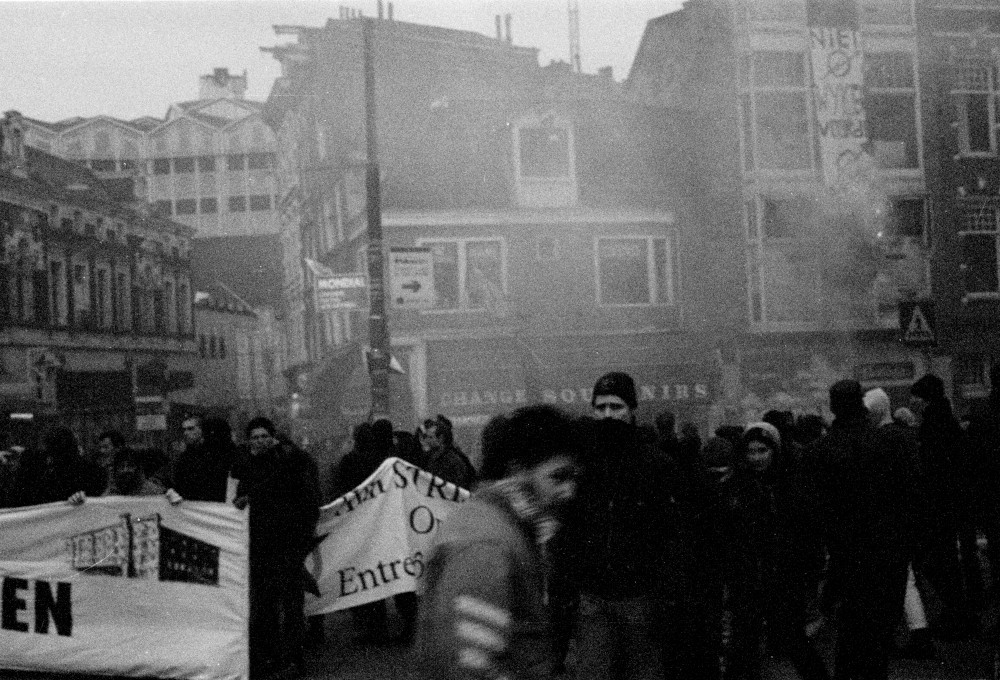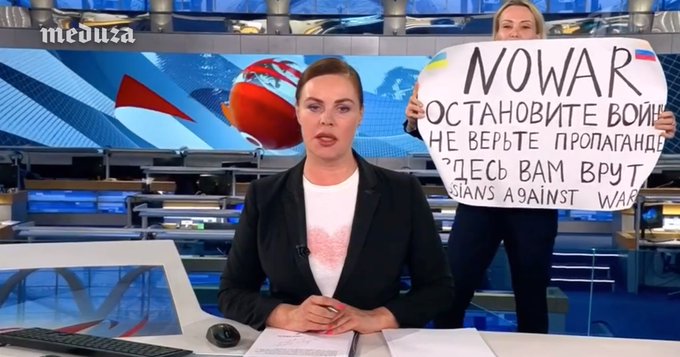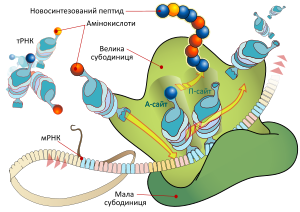EU border chief forced to step down
EU border chief forced to step down
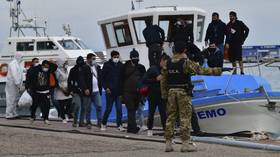
The European Union’s top border protection official has resigned following claims that years of rights abuses occurred under his watch, including alleged mistreatment of migrants who arrive in the bloc’s territory.
Fabrice Leggeri, a French national who headed up the European Border and Coast Guard Agency, commonly known as ‘Frontex,’ confirmed his departure in a statement obtained by several media outlets on Friday.
“I give my mandate back to the Management Board as it seems that [the] Frontex mandate on which I have been elected and renewed in late June 2019 has silently but effectively been changed,” he said.
While a European anti-fraud agency launched a probe into the abuse allegations last year, its findings have yet to be made public. However, investigations by a consortium of regional media outlets have indicated that Frontex was aware of at least 22 cases of migrant ‘pushbacks,’ when immigration authorities simply forced asylum seekers, arriving by boat, back out to sea.
The 22 ‘pushbacks’ were conducted by both Frontex and Greek officials and involved more than 950 migrants, all occurring between March 2020 and September 2021, the media outlets reported – among them Germany’s Der Spiegel, France’s Le Monde, Switzerland’s SRF et Republik and investigative NGO Lighthouse Reports.
Frontex convened an emergency meeting on both Thursday and Friday to address allegations against Leggeri and two other staffers at the agency. The former Frontex chief has denied the charges in the past, and the European Parliament issued a report on the matter last year.
“The management board took note of his intentions and concluded that the employment has therefore come to an end,” Frontex said in a statement, adding that Leggeri formally resigned on Thursday.
Defined as any government policy in which “migrants are forced back over a border…without consideration of their individual circumstances and without any possibility to apply for asylum,” EU law prohibits ‘pushbacks’ over concerns they will place human lives in danger, as many migrants show up in unseaworthy boats and rafts following lengthy voyages. International law also generally bans “refoulement,” or the forcible return of refugees to a country where they may be at risk of persecution.
assange
Assange extradition order issued by UK court
The Australian-born journalist is facing an effective life term on American soil, if the decision is signed off by Home Secretary
Assange extradition order issued by UK court
Julian Assange. © Getty Images / Carl Court
A magistrates court in London has issued a formal order to extradite WikiLeaks founder Julian Assange to the US to face espionage charges there, and a possible effective life imprisonment. Wednesday’s ruling may be appealed.
The Westminster Magistrates’ Court decision reverses its previous ruling that denied the US extradition to the US based on Assange’s poor mental state and the harsh conditions in American high-security prisons. UK Home Secretary Priti Patel will need to authorize the extradition before it can be executed.
WikiLeaks editor-in-chief Kristinn Hrafnsson said the UK court was issuing a “death sentence” to Assange by passing its decision. He is facing up to 175 years in prison under the espionage charges he faces in the US indictment.
The legal team defending Assange said it will make representations to Secretary Patel, asking for a chance to make an appeal against the court order. The lawyers said they may appeal to the High Court, even if the secretary grants the extradition.
The previous British rejection of the extradition request was issued by the same court in January 2021. The American side successfully appealed the decision by challenging the testimony of defense experts, and by offering to give formal assurances that Assange would not be put under the worst security regime during his prosecution in the US.
Julian Assange: From liberal darling to public enemy no. 1
Read more
Julian Assange: From liberal darling to public enemy no. 1
Assange, who is best known for his organization’s pro-transparency activism and its publication of leaked classified documents, which has exposed the dark secrets of many governments, has been in British custody since April 2019. He is kept at the high-security Belmarsh prison, dubbed “British Guantanamo” for its role as the incarceration site of the most dangerous criminals in the UK. He had previously spent seven years locked inside Ecuador’s embassy in London, before a new government in Quito revoked his asylum.
During his self-exile at the embassy, the US unsealed its case against Assange and filed a request to the UK to hand him over for prosecution.
The prosecution in Britain has sparked international criticism against the British government by advocates of media freedom. Assange supporters see him as a prisoner of conscience, who is being persecuted by Washington and London for his work as a publisher. The precedent sends a chilling message to any journalist wishing to investigate misconduct by Western governments that their lives may be ruined in retribution, critics said.
On March 23, Assange married Stella Moris, with whom he has two children. The ceremony was conducted inside the prison, and only a limited group of people was allowed to attend.
READ MORE: Aim of Assange’s prosecution is to ‘scare others’ – Rafael Correa to RT
Julian Assange has been a target for the US since 2010, when Wikileaks published a trove of State Department cables and Pentagon documents that depicted alleged war crimes committed by US forces in Afghanistan and Iraq. He has been accused of attempting to hack Pentagon computers and has been charged under the Espionage Act, which prohibits obtaining information related to national defense which can be used to undermine US interests or benefit foreign nations.
Assange has denied all the charges against him, with his legal defense team arguing that he had not been under US jurisdiction and had engaged in completely legal journalism. They also deny allegations of conspiring to hack Pentagon computers, insisting that the case is based on discredited testimony of the convicted Icelandic criminal ‘Siggi the Hacker’.
RSS#5, 21 March 2022: “Russia and Ukraine: Negotiated Settlement and End State?” 
New post on In Moscow’s Shadows |
|
SCSS#7, 15 March 2022: “Russia-China Axis: Polar Power-Plays?”
SCSS#7, 15 March 2022:
|

This is a summary of the discussion at the latest workshop of the current series of online Strategic Competition Seminar Series (RSS) webinars held on March 15, 2022 by the George C. Marshall European Center for Security Studies (GCMC) in Garmisch-Partenkirchen, Germany. The summary reflects the overall tenor of the discussion, and no specific element necessarily should be presumed to be the view of either of the participants. Please note that Mark Galeotti is only hosting these useful summaries and can claim no credit for compiling them.
Context:
Russia is an Arctic superpower by virtue of the length of its Arctic frontier (over 50% of the Arctic Ocean is Russian coastline), size and scope of military, civil population and economic presence. With its icebreaker and capability gap and North Pole floating station, it is not just second to none, but more than the others combined. China’s Arctic Strategy (2018) defines itself as having Arctic stakeholder status, in contravention of its 2013 Arctic Council observer commitments. China is a strategic power in the Antarctic.
When we look to both poles, to what extent do we see convergence in terms of goals of Russia and China? Where are points of alignment, convergent interests and divergence? In particular, how might the impact of Russia’s invasion of Ukraine impact on Russia’s military buildup, modernization and securitization agenda in the Arctic, trade along the Northern Sea Route (NSR) which is enabled by conflict free, stable and predictable operating environment and its willingness to uphold the international legal architecture of the Arctic, as agreed by stakeholders? Are the rules of the Sino-Russian relationship now to be written in Chinese characters and not Cyrillic?
Antarctic
The 1959 Antarctic Treaty and related agreements designates the Antarctic as the area south of 60 degrees latitude. The treaty itself has 14 articles and is in force indefinitely. The continent is declared a politically neutral territory, with the sovereignty claims of seven claimant states (Argentina, Australia, Chile, France, New Zealand, Norway and the United Kingdom) set aside. All 12 signatories of the Antarctic Treaty and the 29 consultative parties (those with substantive research programs in the continent who can vote at the annual Antarctic Treaty Consultative Meeting) agreed that the Antarctic can be only be used for scientific and peaceful purposes. Military bases and activities are expressly forbidden and no party can enhance their own or diminish the territorial claims of others. The US and Russia have not made a territorial claim but reserve the right to do so. The Antarctic Treatyallows for a review conference if a majority of signatories agree to open it and consensus of all parties to create a new regulatory framework. Both Russia and China continue to plant the seed that the treaty is not “future proof” and should be discarded and rewritten.
China is a major player on the continent. It has four Antarctic research stations: Great Wall, Zhongshan, Taishan and Kunlun (4,093 meters’ elevation above sea level, second-southernmost research base in Antarctica), with a fifth station being built on the Ross Sea Ice Shelf, to be completed in 2022. Kunlun has never been inspected. China pushes the notion of a “specially managed area” around its research stations over which foreigners should fly over or enter, particularly near Kunlun in an area called Dome A (Dome Argus). Other parties resist this normative change, as well as criticize Chinese non-compliance with rules, for example, pertaining to the submission of environmental and planning documents. China utilizes two icebreakers, the first built (MV Xue Long – ‘Snow Dragon’) was built by Ukraine and has been in service since 1994, the second (MV Xue Long 2) in China.
Russia has been present in the Antarctic longer than China and has ten research bases or stations. Five of these are seasonal bases (Molodezhnaya, Bunger Oasis, Russkaya, Leningradskaya and Druzhnaya-4), and five are operational year-round: Mirniy (founded 1956), Vostok (1957, currently being upgraded to accommodate 35 people during the season and 15 people during the winter period, with a two-year supply of fuel/food), Progress, Novolazarevskaya and Bellingshausen. The Admiral Vladimirsky and Yantaroceanographic research ships, operated by the Russian Navy and help service its bases on the continent. Russia operates six nuclear-powered and 40 diesel icebreakers but these are used in the Arctic.
The Antarctic is mined for its resources. Chinese fishing flotillas currently harvests about 30,000 tons of Antarctic krill annually, the building block of the earth’s food chain. The Soviet Union and then Russia were the main krill harvester, accounting for over 95% of the global volume of krill fishing, but its industry now stagnates and its fishing fleet is in a deteriorated state. The continent is rich in coal deposits and the Southern Ocean rich in gas and the Antarctic ice-cap holds 90% of the earth’s fresh water. At annual meetings of the Commission for the Conservation of Antarctic Marine Living Resources (CCAMLR), which comprises 25 nations and the European Union, both Russia and China in the name of “resource security” cooperate to block proposals to create the world’s largest sanctuary in Antarctica, protecting penguins, reefs, seabirds and ecosystems, as well as initiatives aimed at tackling climate change in Antarctica. However, differences are apparent: while China seeks to exploit the continents resources in 15-20 years, Russia’s goal is to lock them up and avoid alternative supplies of energy entering the market.
Both Russia and China share an interest in projecting Polar Great Power identities in the Antarctic. On the 27 January 1820 the first confirmed sighting of the mainland Antarctic was by a Russian expedition, led by Fabian Gottlieb von Bellingshausen and Mikhail Lazarev. They were commissioned by Tsar Aleksandr I to explore the southern seas in search of the Terra Australis Incognita (“unknown southern land”). In 2020 to be the “Year of Antarctica” and in Russia a stress is placed on Russia’s historical links with Antarctica, with President Putin in 2018 seeking to “restore historical justice” by putting original Russian names of many locations in Antarctica back on the map: “With the most active participation of the Russian Geographical Society, it is proposed to prepare a new Russian Atlas of the World, in which all such cases [of renaming toponyms that bore Russian names] will be correctly interpreted.”
Logistically China tends to be more self-sufficient, though it does rely on Russian facilities in Antarctica, most notably aerodromes, though China seeks to build its own. Russia has two aerodromes, one with India and another temporary one and works with South Africa for resupply. The Chinese company CEIEC (China National Electronics Import and Export Corporation) cooperated with Brazil to build its new Comandante Ferraz Antarctic Station between 2016 and 2020.
The continent is strategically important and both Russia and China have a shared interest in leveraging their presence to compete with Washington. China undertakes dual use “scientific research” which mask military-security ends and erode a rules-based order. From the Antarctic submarines can be launched into three of the world’s oceans – the Atlantic, Pacific and Indian. The EU, US, Russia and China can use Antarctic bases for GPS satellites. China launched its first polar-observing satellite in September 2019 – the ‘Ice Pathfinder’ (Code: BNU-1) – which carriers out “satellite-drone-ground” synchronous scientific experiments in the Antarctic. Russia’s ZALA Aero company (part of the Kalashnikov group within the Rostec state corporation) tests light drones in the extreme conditions of Antarctica, operating the drones at minus 52 degrees Celsius. China has yet to table an Antarctic policy, Russia’s was published in 2001 (before its Arctic) and this was revised in 2021.
Arctic
The Arctic Council’s 2021 Strategic Plan was celebrated for its forward-thinking ambitions. Members envisioned an Arctic in 2030 to be a “region of peace, stability and constructive cooperation”. The permanent member states of the Arctic Council consists of Canada, Finland, Iceland, the Kingdom of Denmark, Norway, Sweden, the United States and Russia, which holds the rotating Chair between June 2021 and May 2023. However, following Russia’s invasion of Ukraine on 24 February 2022, Russia’s “partners” suspended Russia from the Northern Dimension (the European Union, Iceland and Norway) on 8 March and on 9 March the Barents Euro-Arctic Council (BEAC) members (Denmark, Iceland, Norway, Finland and Sweden) and the EU followed suit. Seven of the eight permanent member states of the Arctic Council voted to ‘pausing’ Arctic Council engagement. Russian Foreign Ministry Spokeswoman Maria Zakharova accused its partners, who Russia had designated “hostile states” of being “Blinded by the anti-Russia hysteria”.
This ‘pause’ in effect places addressing any issue inside the Arctic on hold. The Arctic Council no longer represents a robust, operational mechanism for Russia-West dialogue and cooperation. It is hard to envisage the resumption of ties in the near term. The Arctic Council could seek to function without Russia in order to address environmental and other issues that cannot wait for the end of hostilities in Ukraine. Russia’s acceptance of greater risk regarding civil aircraft maintenance standards, spills over into oil and gas production in the Arctic, where sophisticated technology needed for offshore Arctic exploration can easily break down, inviting environmental disasters. For these offshore fields to be profitable global demand needs to price oil at $160 pb over a sustained period.
The economic impact of sanctions, unexpected in scale and scope, is profound. Beijing’s share in the Yamal LNG venture is 29.9%, Russia’s Novatekholds 50.1% and France’s Total holds 20%. Arctic-2 LNG project, China holds 20%, Novatek holds 60%, Total accounts for 10% and the remaining 10% is held by a Japanese consortium. Sanctions mean that external investment should cease. Russia’s ability to limits new Chinese investments in for example Russian ports, will be harder to maintain.
However, Russia may seek to turn the crisis into an opportunity to bring ‘new’ non-Arctic stakeholders partners into the theater: China, India, the United Arab Emirates (UAE), Vietnam, and Bangladesh – the future power houses. The UAE apart, these countries abstained in United Nations General Assembly vote condemning Russia for its invasion of Ukraine. In addition, while Shell may pull out, BP has a 19.7% stake and it remains to be seen if France’s Totalwalks away from Russia’s trans-shipment hubs. What is clear is that Russia’s Arctic stakeholders will all be impacted by the Ukraine invasion. These include corporations such as Rosatom, Novatek, and Rosneft; defense and security heavy-hitters, such as Defense Minister Shoigu, and Security Council Secretary Patrushev; and, the General Staff (in particular its nuclear lobby) and the Defense Industrial Complex (VPK).
Prior to the invasion the Russian media had reported heavily on Russia’s Northern Fleet exercise in the Barents Sea involving 20 warships, submarines and support vessels including the heavy nuclear-powered missile cruiser Pyotr Veliky and the frigate Admiral Flota Sovetskogo Soyuza Gorshkov, as well as around ten aircraft and helicopters from the fleet’s Air Force and Air Defence Army. This exercise foreshadowed NATO’s “Cold Response 2022” exercise, seeking to reassure and deter, the largest in the High North since the Cold War.
Russia’s military agenda in the Arctic is reshaped by the Ukraine invasion. The Russian General Staff now fear NATO escalation in the Arctic. In three weeksof fighting in Ukraine Russia has consumed three years of military hardware production, with money and capabilities designated for the Arctic being expended in Ukraine. Moreover, the Northern Fleet deployed some of its assets, including the Marshal Ustinov cruiser and two amphibious ships to the Eastern Mediterranean in February 2022, so its combat order is rather reduced, while the “Cold Response 2022” is the largest ever. Remarkably, Russia’s state-controlled media in lock-step over the necessity of “demilitarization” and “denazification” of Ukraine, does not make any reference to this NATO exercise, which involves two air-craft carriers, 35 countries and 35,000 troops.
As a result, grey zone or hybrid scenarios involving Svalbard (Spitsbergen) and Bear Island are now much less likely. In the past Russia has accepted risk as a competitive strategic advantage and for example, conducted live-fire missile launches in NATO exercise areas and undertaken GPS jamming. Such spoiler and disruptive conduct is no longer in evidence. Most of Russian’s land forces are fully deployed in Ukraine and an exit strategy short of “declare victory” and leave is not in evidence. The Bering Strait remains the world’s most overlooked emerging global transport choke point. Russia is unable to protect its strategic nuclear submarines on the Kamchatka Peninsula, as it cannot organize a “naval bastion” or uses an A2AD “bubble” in the Sea of Okhotsk. Limited U.S. Freedom of Navigation Operations (FONOPs) to the west of the Bering Strait might reinforce the common benefit that flows from denying Russia the exclusive control over this maritime route. While conventional escalation or provocation scenarios are put on hold, Russia might still look to carry out nuclear testing on Novaya Zemlya, undertaking vertical escalation to demonstrate its nuclear might. Undertaking chemical, biological or radiological attacks in Ukraine itself, risks literal blow-back into Crimea or the Russian cities of Belgorod or Rostov-na-Donu.
Conclusions:
- In the Arctic, Russia and China have a converging interest in the NSR. However, here the situation is very fluid. Climate change creates new borders and brings into question the continental shelf, with overlapping claims from Russia, Denmark (Greenland) and Canada. Might a decision be made that rejects Russian claims? Ukraine demonstrates that Russia is prepared to suffer reputational damage to achieve its ends. Might Russia apply the same logic to the Arctic and seek to nationalize the NSR and thereby control access to transport lines and Arctic resources? Alternatively, might the US Senate ratify UN Convention of the Law of the Sea (UNCLOS), allowing for consensus and adding strength to the Arctic Council and UN stances? Is the Arctic considered a global commons? UNCLOS is not very precise and leaves too much room for interpretation, as evidenced by the behavior of both China and Russia.
- Russia’s invasion of Ukraine stress-tests the China-Russia axis. Does China decide that it cannot let Russia fail too badly, as this sets a poor precedent and strengths NATO/the ‘political West’ and leaves China exposed as a “near peer” competitor? Thus, the invasion of Ukraine deepens the functional axis and widens it: China supplies Russia with military materiel; Russia becomes more dependent on Chinesetechnology, finance and trade; the relationship becomes more asymmetric and in China’s favor. Indeed, the invasion of Ukraine is understood as a global inflection point, one that marks the death of the rules-based order, with Russia, China, India and ASEAN states breaking with the past.
- Or, alternatively, does China decide that Russia now constitutes a serious liability, one that could threaten China’s own strategic autonomy and longer term goals? The challenge to the rules-based order posed by Russia is considered too disruptive: it impacts on China’s own conception of world order; China’s role within it in too detrimental a manner; and constrains Xi Jinping’s ability to address destabilizing inequalities in China itself. China therefore decides to highlight its global leadership role and pressure Russia into a political settlement. In either case, how might we see this contract manifest itself in the Arctic and Antarctic?
- Russia’s inability to unilaterally impose its regulatory scheme on the NSR, requiring permission to enter it, not providing an exception for sovereign immune vessels, and insisting China abides by Russian transit laws (vessels must be piloted by Russian pilots, tolls are charged, and Russia must be pre-warned about trips) would be a clear indicator of change.
- But ultimately, the answer to the question may lie in Moscow and the shelf-life of the Putin regime. For Russia an inability to secure a victory in Ukraine is a defeat. If this is the case, is the parallel 1905 (Russo-Japanese War) or 1917: in other words, does it involve regime/leadership change and reform, or regime and political system change and chaos?
GCMC, March 16, 2022.
Disclaimer: This summary reflects the views of the authors (Pavel Baev, Elizabeth Buchanan and Graeme P. Herd) and are not necessarily the official policy of the United States, Germany, or any other governments.



